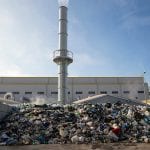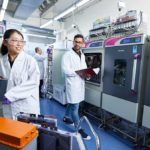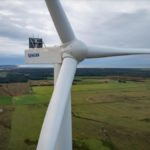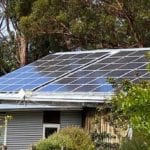Feed aggregator
Criticism of animal farming in the west risks health of world’s poorest | Emma Naluyima Mugerwa and Lora Iannotti
In the developing world most people are not factory farming and livestock is essential to preventing poverty and malnutrition
The pandemic has pushed poverty and malnutrition to rates not seen in more than a decade, wiping out years of progress. In 2020, the number of people in extreme poverty rose by 97 million and the number of malnourished people by between 118 million and 161 million.
Recent data from the World Bank and the UN shows how poverty is heavily concentrated in rural communities in Africa, Asia and Latin America where people are surviving by smallholder farming. This autumn there will be two key events that could rally support for them.
Continue reading...The week in wildlife – in pictures
The best of this week’s wildlife pictures, including a coloured photo of Tasmanian tiger, humpback whale and friendly donkey
Continue reading...Forget plans to lower emissions by 2050 – this is deadly procrastination | Peter Kalmus
Fixating on ‘net zero’ means betting the future of life on Earth that someone will invent some kind of whiz-bang tech to draw down CO2
The world has by and large adopted “net zero by 2050” as its de facto climate goal, but two fatal flaws hide in plain sight within those 16 characters. One is “net zero.” The other is “by 2050”.
These two flaws provide cover for big oil and politicians who wish to preserve the status quo. Together they comprise a deadly prescription for inaction and catastrophically high levels of irreversible climate and ecological breakdown.
Continue reading...CN Markets: Trade in China’s CO2 market shrivels further, leaving traders frustrated
Chevron seeks equity interest in US clean energy storage project
AU Market: ACCUs surge to record highs as demand persists
Controversial incineration projects shifted out of Sydney in waste-to-energy plan
 The new NSW waste-to-energy plan shifts incineration projects out of Sydney and into the regions. Can it win support?
The new NSW waste-to-energy plan shifts incineration projects out of Sydney and into the regions. Can it win support?
The post Controversial incineration projects shifted out of Sydney in waste-to-energy plan appeared first on RenewEconomy.
Energy Insiders Podcast: Pole Position – Networks want more battery storage
 Greg Hannan, the head strategy at three Victoria network owners, on why batteries will be hanging from poles, and the need for more storage.
Greg Hannan, the head strategy at three Victoria network owners, on why batteries will be hanging from poles, and the need for more storage.
The post Energy Insiders Podcast: Pole Position – Networks want more battery storage appeared first on RenewEconomy.
The daily dance of flowers tracking the sun is more fascinating than most of us realise
Gelion strikes Sydney manufacturing deal for “safe and durable” zinc-bromide battery
 University of Sydney spin off Gelion secures a deal to have its long-life and fire resistant battery technology manufactured in Australia.
University of Sydney spin off Gelion secures a deal to have its long-life and fire resistant battery technology manufactured in Australia.
The post Gelion strikes Sydney manufacturing deal for “safe and durable” zinc-bromide battery appeared first on RenewEconomy.
Infratil pivots to Asian renewables market, after $2 billion exit from Australia
 ASX-listed Infratil to make a may pivot to the Asian renewables market, after exiting Australia with the sale of Tilt Renewables.
ASX-listed Infratil to make a may pivot to the Asian renewables market, after exiting Australia with the sale of Tilt Renewables.
The post Infratil pivots to Asian renewables market, after $2 billion exit from Australia appeared first on RenewEconomy.
Matt Kean: We absolutely can cut out coal generation by 2030
 NSW energy minister says "we absolutely can" end coal generation by 2030, and says he won't appeal a recent court case.
NSW energy minister says "we absolutely can" end coal generation by 2030, and says he won't appeal a recent court case.
The post Matt Kean: We absolutely can cut out coal generation by 2030 appeared first on RenewEconomy.
Flexible PV: South Australia trials new solar export rules as it heads to 100 pct solar
 South Australia to introduce flexible exports for new and upgraded systems as it seeks to manage the growing dominance of rooftop solar.
South Australia to introduce flexible exports for new and upgraded systems as it seeks to manage the growing dominance of rooftop solar.
The post Flexible PV: South Australia trials new solar export rules as it heads to 100 pct solar appeared first on RenewEconomy.
CP Daily: Thursday September 9, 2021
Biden FERC nominee to swing US federal agency to Democrat majority
NA Markets: CCA prices flutter around $25 level as RGGI finds bullish support before Q3 sale
Green fintech app launches investment offset feature
How urban soundscapes affect humans and wildlife — and what may have changed in the hush of lockdown
The Guardian view on fossil fuels: a very long way to go | Editorial
New carbon capture technology should be welcomed. But weaning the world off coal, oil and gas is what matters most
The switching on of the world’s largest carbon capture and storage plant, in Iceland, is a glimmer of hope in a bleak climate landscape. The amount of carbon dioxide removed from the atmosphere by this new machine will be tiny: 4,000 tonnes a year, which is equivalent to that produced by 870 cars. Still, the project brings a step closer the possibility that significant amounts of carbon dioxide could, one day, be removed from the atmosphere.
The significant risks that such technological developments carry must be addressed head-on. The danger is that they are a displacement activity from the massive and necessary task of reducing and then eliminating emissions (with any residual emissions offset or, if carbon capture technologies are scaled up, removed). This distraction need not be deliberate, although fossil fuel producers have consistently undermined climate action by promoting the idea that technological solutions will eventually make calls to decarbonise obsolete.
Continue reading...


